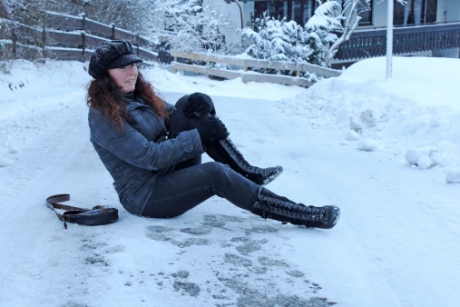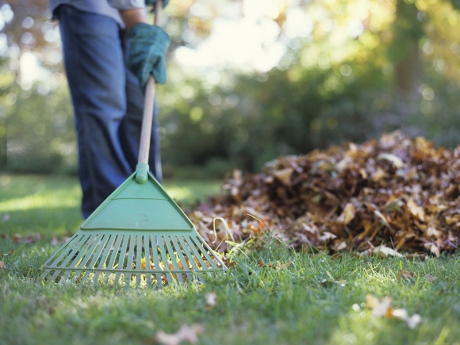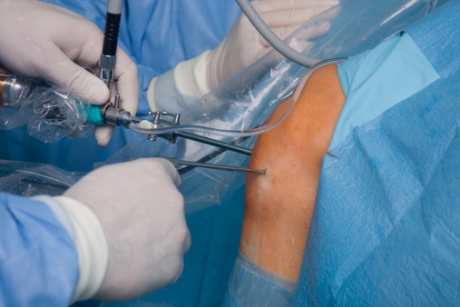If you have osteoporosis, treating the condition directly with medicines or calcium supplements is important. But it’s also crucial to do everything you can to avoid the most serious risk of osteoporosis: broken bones. Practicing fracture prevention is a vital part of your osteoporosis treatment.
According to the National Institutes of Health, osteoporosis causes 1.5 million bone fractures every year. And these broken bones can be a lot more than painful and inconvenient. Fractures can have a devastating and sometimes permanent impact on your health.
So what can you do to avoid broken bones and painful rehab? Here’s a list of six tips for fracture prevention that every person with osteoporosis should know. By asking your orthopedic physician the right questions — and making a few changes to your habits — you can greatly reduce your risks.
The Importance of Fracture Prevention
In people with osteoporosis, fractures can happen anywhere, but wrist fractures, hip fractures, and spinal fractures are the most common. The effects can be serious. 700,000 people with osteoporosis fracture their vertebrae every year, and many are left with chronic pain. Of the 300,000 people with osteoporosis who have a hip fracture this year, half will never be able to walk again without assistance. And a staggering 20% of people over age 50 who break a hip will die within a year from complications.
If you’re older and have osteoporosis, not only are falls much more dangerous, but they’re more likely too. As you age, your body’s muscle tone decreases. Your vision worsens. You’re more likely to need medications, which can affect your balance. Even seemingly trivial things, like needing to go to the bathroom more in the night, can up your odds of falling. Essentially, a number of minor risks associated with aging coalesce at the same time, greatly increasing the possibility of a fall and fractured bone.
The good news is that with some simple changes to your lifestyle, you can seriously lower these risks. Here’s a rundown of what you can do.
- Exercise to Improve Balance and Strength
Many people with osteoporosis worry about the risks of exercise. The fact is that exercising reduces your risk of falls. Keeping physically active helps your reflexes stay sharp and your muscles stay strong. That can help with coordination and lower your risk of falling. Aside from improving your balance and strength, exercise also has a direct impact on the strength of your bones. Bone is a living tissue. Like muscle, it weakens if you don’t exercise it. By staying fit, you can make your bones stronger and less likely to break during a fall. Experts generally recommend a combination of weight-bearing exercise (like walking), resistance exercise (like lifting weights), and flexibility and balance exercises (like yoga or tai chi).
- Tread Carefully
If you have osteoporosis, you need to consider more than fashion when choosing your shoes. Wearing the wrong sort of footwear can really increase your risk of a fall.
But happily, you don’t have to be stuck with “sensible shoes” either. Just look for low-heeled shoes that offer good support and have rubber soles rather than leather ones. While sneakers are fine, avoid ones with deep treads that can trip you up.
Start wearing shoes inside the house too: walking around in socks and slippers can increase your risk of slipping.
When you’re walking outside, play it safe. Walk on the grass when it’s been raining or snowing, since you’re more likely to slip on concrete. Always put down salt or kitty litter on icy patches around your home.
If you have difficulty walking due to a medical condition such as arthritis or another problem, make sure to use the assistive device recommended by your orthopedic physician, such as a cane or walker.
- Know How Medicines Might Affect You
Unfortunately, as you get older, you’re more likely to need daily medications. Some medications have side effects which can increase your risk of having a fall. Medications that can cause dizziness or lack of coordination are:
- Sedatives or sleeping pills
- Drugs that lower high blood pressure, which can sometimes cause hypotension, or blood pressure that is too low
- Antidepressants
- Anticonvulsants, which are used to treat epilepsy and some psychological conditions
- Muscle relaxants
- Some medicines for heart conditions
Other drugs, like some corticosteroids, are also associated with a higher risk of osteoporosis and fractures. Just the number of medicines you take can increase the danger. Studies have linked taking four or more prescription medicines with a higher rate of falls, regardless of what the drugs are.
But given that you need these medicines for other health reasons and can’t just stop taking them, what should you do? Go over all the drugs you take with your doctor. Bring in a list or the bottles themselves. Keep in mind that one doctor — like your primary care provider — might not know what other doctors — like your cardiologist, or rheumatologist — have prescribed.
If any of the medicines you take are increasing your risk of falls, ask your doctor for advice. It’s possible that your doctor can change your dosage or change medicines altogether so that you’re less likely to fall.
- Lighten Up
As you age, you may notice that your vision isn’t quite as sharp as it once was. Sometimes this is due to a treatable health condition, like cataracts. But it’s also natural to lose some of the contrast sensitivity in our vision as we age, making it harder to discern objects, especially in low light. So you need to brighten up your home. Here are some tips:
- Install overhead lights in all rooms, so you don’t have to stumble around in the dark to find the lamp.
- Use nightlights in your bedroom, bathroom, and any hallways that connect them.
- Make sure all stairways, both inside and outside, are well lit.
- Keep a flashlight by your bed.
- “Fall-Proof” Your Home
A key part of fracture prevention is to make your home safer. Here are some tips:
- Keep rooms free of clutter — get rid of those piles of clothes and boxes of papers.
- Put down carpet or plastic runners on polished — and potentially slippery — floors.
- Get throw rugs, electric cords, and phone lines off the floor.
- Make sure to have handrails on all stairs.
- Install railings in the bathroom around the toilet and the shower.
- Put a rubber mat on the floor of your bath or shower.
- Treat Health Conditions
Many chronic diseases and health conditions become more common as you get older. Some can affect your strength or physical functioning and increase the risk of a fall. Arthritis can make it hard to move around. Vision problems directly increase your risk of tripping.
If you have any other health conditions, ask your doctor if they might increase your risk of a fall. If they do, seek out treatments that might help. One difficulty is that some of these problems may come on so gradually that you might not even notice. For instance, you might not realize that your vision is slowly getting worse, or if your gait has become a little less steady. That’s why it’s important to get regular check-ups: not only with your primary physician, but your eye doctor and any other specialists you need.
Bone Fractures Aren’t Inevitable
Even with precautions, some types of bone fractures are tough to avoid. Just a mild bump can be enough to break a bone in people with severe osteoporosis. Only 10-15 percent of vertebral fractures are caused by falls. Many fractures in people with severe osteoporosis are caused by physical stress, even by something as simple as bending over or even coughing.
While some fractures can’t be prevented, you can work on the fracture risks you can control. While bone fractures may be more likely as you get older, they aren’t inevitable.










